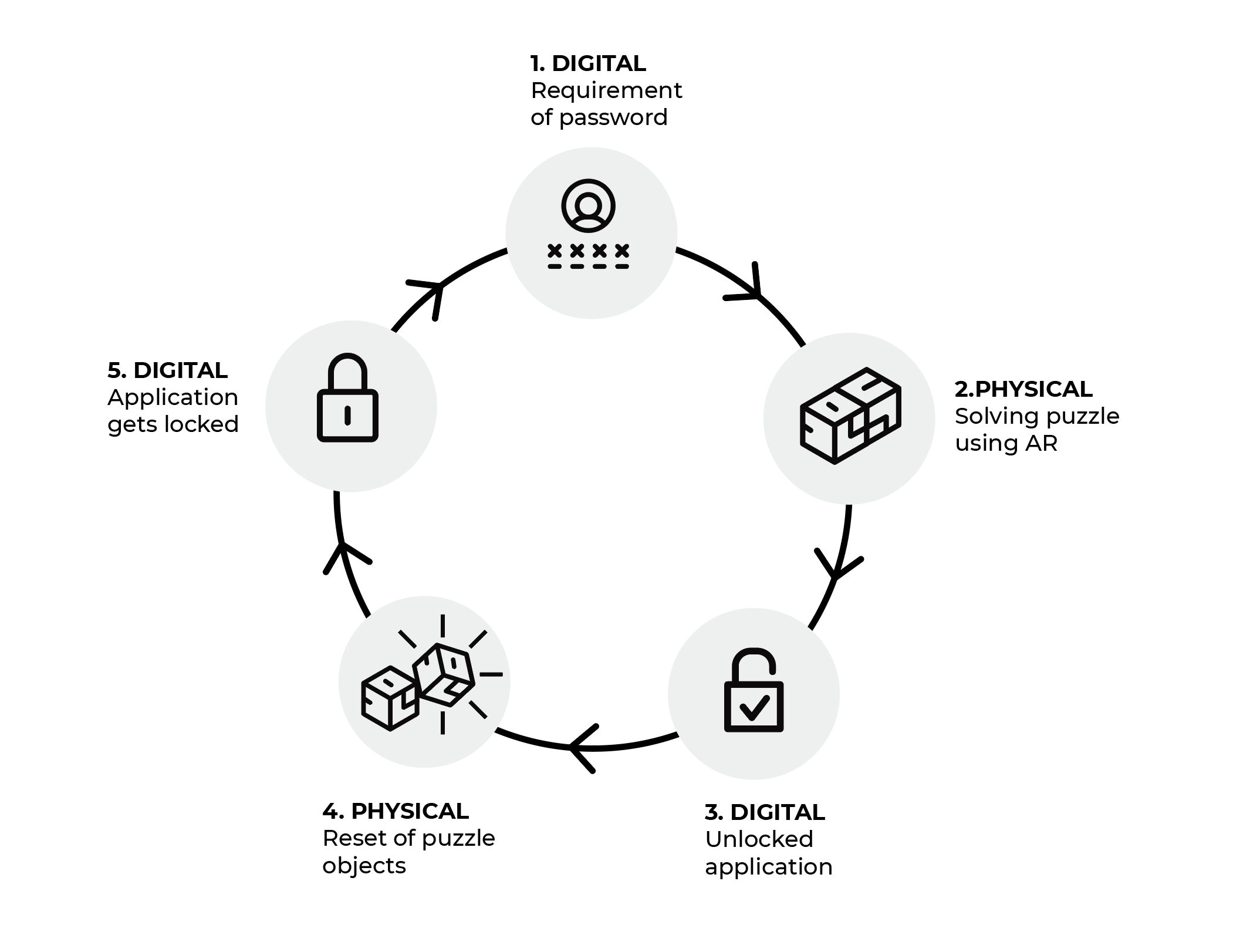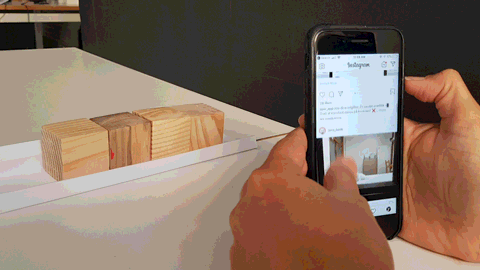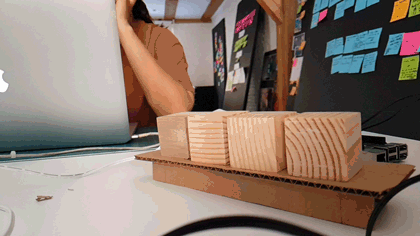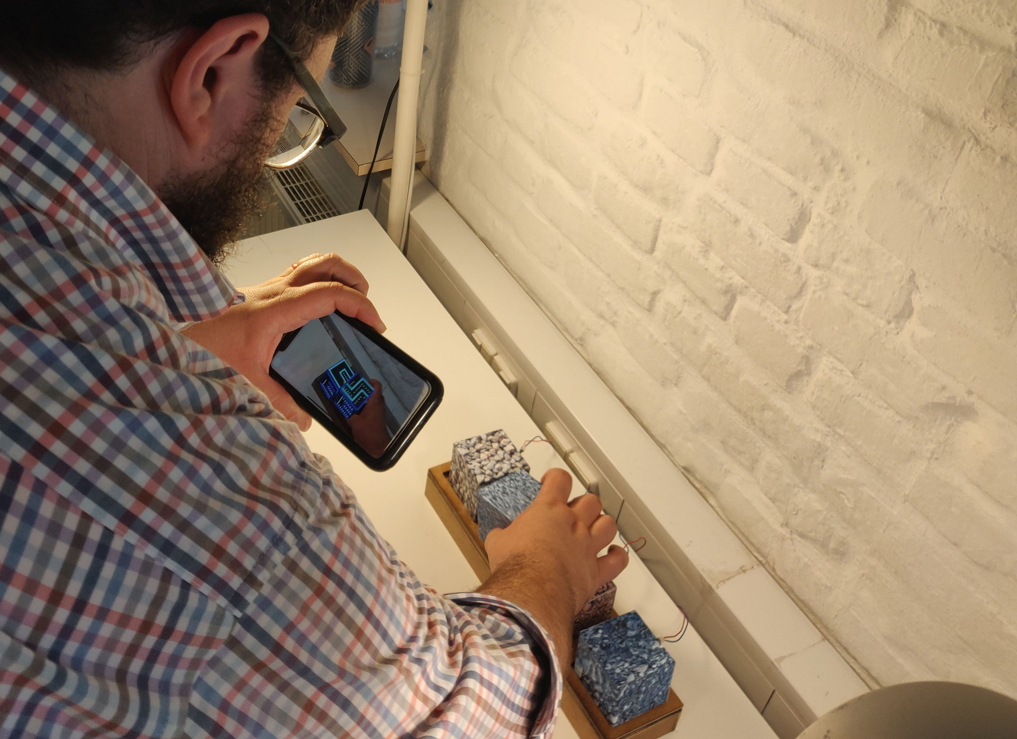Brief
The task at hand was to investigate making physical inputs to digital outputs. In this week long exploration, we started looking into the ways of making encrypted virtual data in a physical format. And started asking ourselves the big question how can passwords for digital applications exist in the physical space.
Solution
In the project, the password is represented in the form of four identical cubes that sit on a stand. Through an AR-enabled device, the user can see a virtual puzzle that lives on the surface of the cubes. The user has to solve the puzzle to unlock the phone or app they are trying to access.
However, entering the password grants access only for a short period of time. When this time period is up, four solenoids in the stand push the cubes off of their resting positions, reshuffling the puzzle. This is equivalent to the concept of “password timeout” that many apps have.
Context
For people who cannot help themselves and check their phones first thing in the morning or right before sleeping, for people who want to be mindful of how much time they spend on social media, or for any kind of application that requires an extra layer of security.








